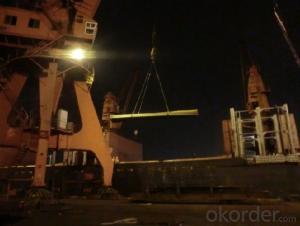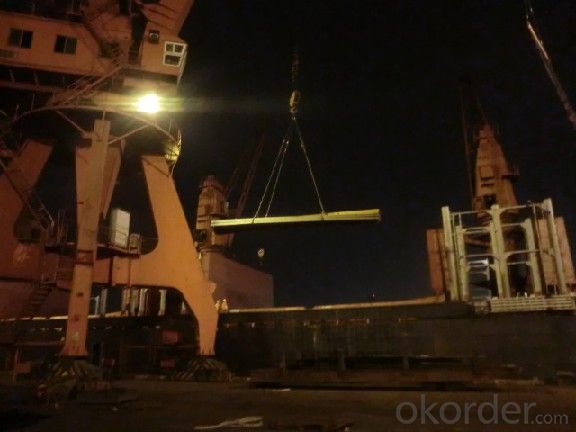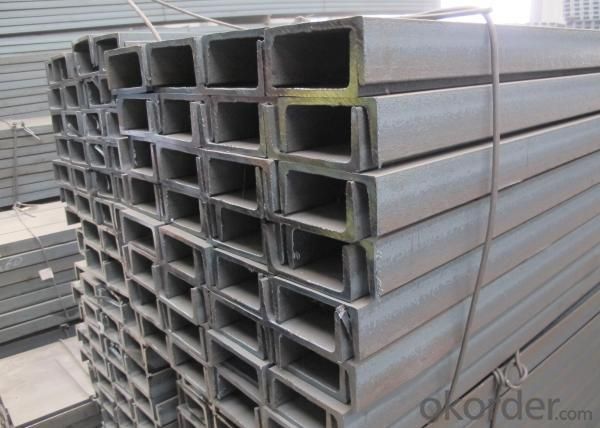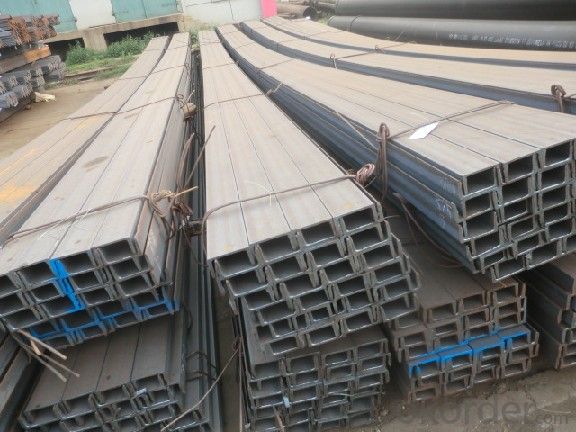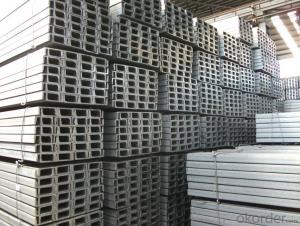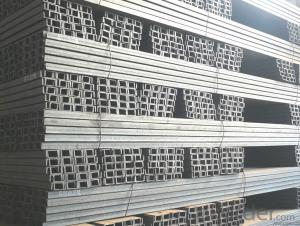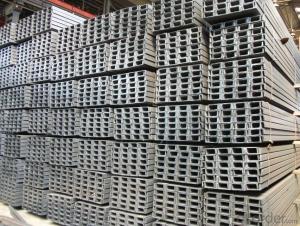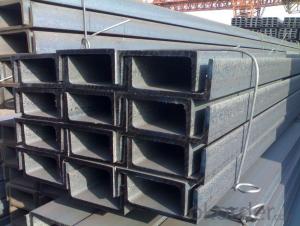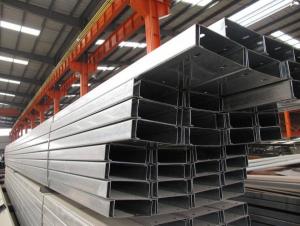Structure U Channel Steel high quality
- Loading Port:
- Tianjin
- Payment Terms:
- TT OR LC
- Min Order Qty:
- 25 m.t
- Supply Capability:
- 20000 m.t/month
OKorder Service Pledge
OKorder Financial Service
You Might Also Like
Product Description:
OKorder is offering Structure U Channel Steel high quality prices with worldwide shipping. Our supplier is a world-class manufacturer of steel, with our products utilized the world over. OKorder annually supplies products to European, North American and Asian markets. We provide quotations within 24 hours of receiving an inquiry and guarantee competitive prices.
Product Applications:
Structure U Channel Steel high quality are ideal for structural applications and are widely used in the construction of buildings and bridges, and the manufacturing, petrochemical, and transportation industries.
Product Advantages:
OKorder's Structure U Channel Steel high quality durable, strong, and resist corrosion.
Main Product Features:
· Premium quality
· Prompt delivery & seaworthy packing (30 days after receiving deposit)
· Corrosion resistance
· Can be recycled and reused
· Mill test certification
· Professional Service
· Competitive pricing
Product Specifications:
Specifications of Steel U Channel:
Standard Applied: GB Standard, EN Standard(UPN), JIS Standard
Sizes: 50mm to 300mm
Material Grade: Q235B, Q345B, S235JR, SS400, ASTM A36
As shown in the figure:
JIS U CHANNEL | Standard h | Sectional b | Dimension s | t | Mass: Kg/m |
(mm) | (mm) | (mm) | (mm) | ||
50x25 | 50 | 25 | 3.0 | 6.00 | 2.37 |
75X40 | 75 | 40 | 3.8 | 7.00 | 5.30 |
75X40 | 75 | 40 | 4.0 | 7.00 | 5.60 |
75X40 | 75 | 40 | 4.5 | 7.00 | 5.85 |
75X40 | 75 | 40 | 5.0 | 7.00 | 6.92 |
100X50 | 100 | 50 | 3.8 | 6.00 | 7.30 |
100X50 | 100 | 50 | 4.2 | 6.00 | 8.03 |
100X50 | 100 | 50 | 4.5 | 7.50 | 8.97 |
100X50 | 100 | 50 | 5.0 | 7.50 | 9.36 |
125X65 | 125 | 65 | 5.2 | 6.80 | 11.66 |
125X65 | 125 | 65 | 5.3 | 6.80 | 12.17 |
125X65 | 125 | 65 | 5.5 | 8.00 | 12.91 |
125X65 | 125 | 65 | 6.0 | 8.00 | 13.40 |
150x75 | 150 | 75 | 5.5 | 7.30 | 14.66 |
150x75 | 150 | 75 | 5.7 | 10.00 | 16.71 |
150x75 | 150 | 75 | 6.0 | 10.00 | 17.90 |
150x75 | 150 | 75 | 6.5 | 10.00 | 18.60 |
Note: We are able to supply other dimensions and sizes, which depends on the customer's requirements for the quantity.
Chemical Composition of Q235B Steel U Channel:
Alloy No | Grade | Element(%) | ||||
C | Mn | S | P | Si | ||
Q235 | B | 0.12-0.20 | 0.3-0.7 | ≦0.045 | ≦0.045 | ≦0.3 |
FAQ:
Q1: Why buy Materials & Equipment from OKorder.com?
A1: All products offered byOKorder.com are carefully selected from China's most reliable manufacturing enterprises. Through its ISO certifications, OKorder.com adheres to the highest standards and a commitment to supply chain safety and customer satisfaction.
Q2: What makes stainless steel stainless?
A2: Stainless steel must contain at least 10.5 % chromium. It is this element that reacts with the oxygen in the air to form a complex chrome-oxide surface layer that is invisible but strong enough to prevent further oxygen from "staining" (rusting) the surface. Higher levels of chromium and the addition of other alloying elements such as nickel and molybdenum enhance this surface layer and improve the corrosion resistance of the stainless material.
Q3: Can stainless steel rust?
A3: Stainless does not "rust" as you think of regular steel rusting with a red oxide on the surface that flakes off. If you see red rust it is probably due to some iron particles that have contaminated the surface of the stainless steel and it is these iron particles that are rusting. Look at the source of the rusting and see if you can remove it from the surface.
Images:
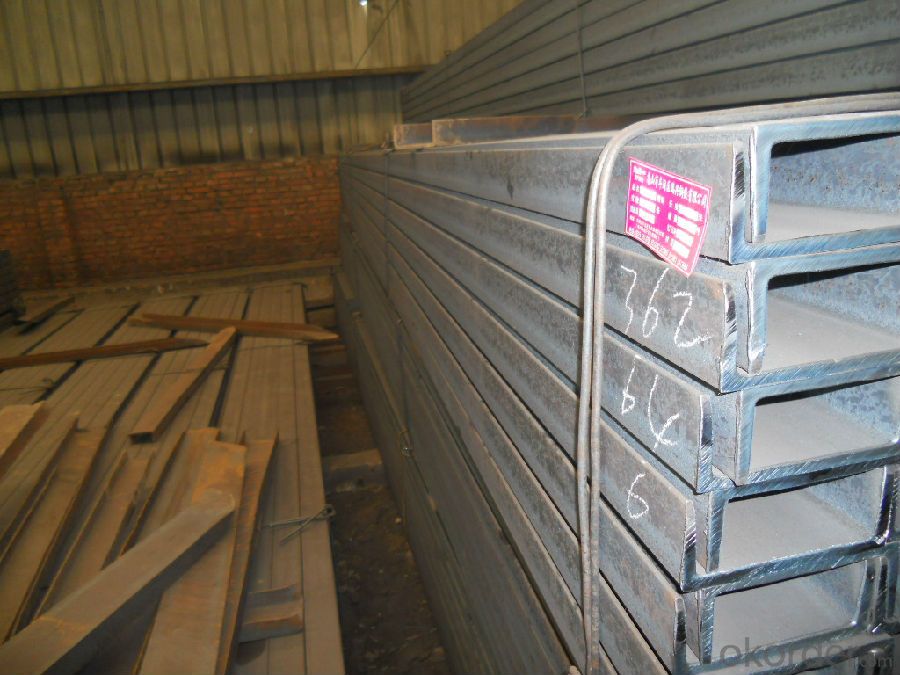
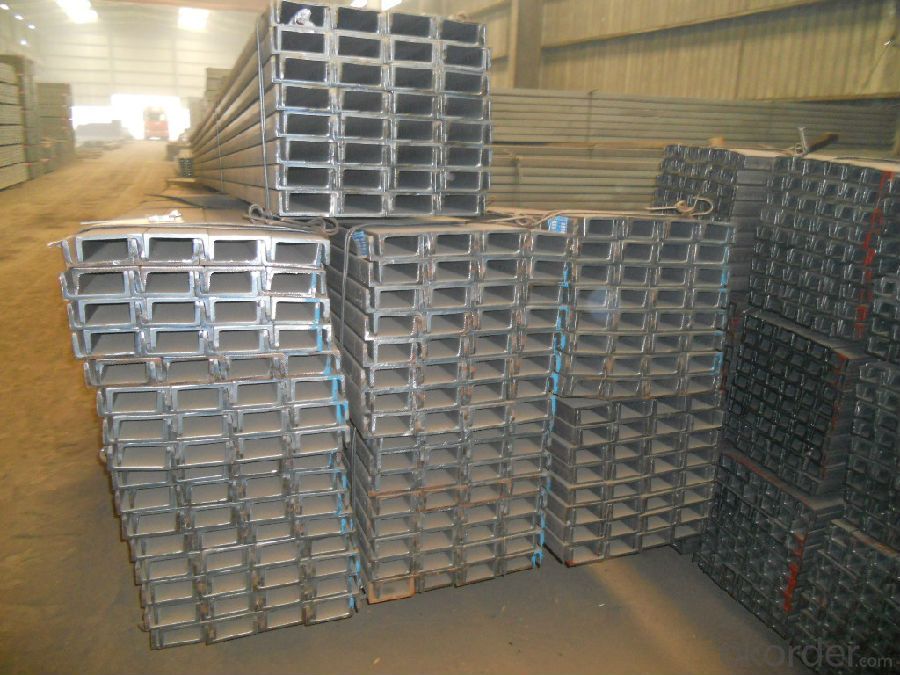
- Q: What are the different types of accessories available for steel channels?
- There are several different types of accessories available for steel channels, each serving a specific purpose and enhancing the functionality of the channels. Some of the common accessories include: 1. Brackets: These are used to provide additional support to the steel channels, especially when they are installed vertically or at an angle. Brackets help in maintaining the structural integrity of the channels and prevent them from sagging or bending. 2. End Caps: These are used to cover the ends of the steel channels, providing a clean and finished look. End caps also protect the edges of the channels from corrosion, moisture, and other external elements. 3. Connectors: Connectors are used to join two or more steel channels together. They come in various shapes and sizes, such as straight connectors, angle connectors, and T-connectors, and are generally made of metal to ensure a strong and secure connection. 4. Mounting Hardware: Mounting hardware includes screws, bolts, and nuts that are used to secure the steel channels to different surfaces or structures. These accessories ensure that the channels are securely fastened and can withstand the load or weight they are intended to support. 5. Sliding Trolleys: Sliding trolleys are used in applications where the steel channels need to support movable loads or equipment, such as sliding doors or conveyor systems. These trolleys allow smooth and easy movement along the channels, providing flexibility and convenience. 6. Cable Management Accessories: Steel channels are often used for cable management purposes, and there are various accessories available to facilitate this. These can include cable clamps, cable ties, cable trays, and cable routing fittings. These accessories help in organizing and securing cables within the channels, ensuring a tidy and efficient cable management system. 7. Hangers and Supports: Hangers and supports are used to suspend or hang the steel channels from ceilings, walls, or other structures. They provide stability and ensure that the channels are properly supported, especially in applications where the channels are used to carry heavy loads. 8. Protective Coatings: While not directly accessories, protective coatings are essential for steel channels to enhance their durability and resistance to corrosion. Coatings such as galvanization or powder coating are commonly applied to protect the steel channels from rust, moisture, and other environmental factors. These are just a few examples of the different types of accessories available for steel channels. Depending on the specific application and requirements, there may be additional accessories or variations of the above-mentioned accessories that can be used to maximize the performance and functionality of steel channels.
- Q: How do steel channels contribute to moisture control in buildings?
- Steel channels in buildings can contribute to moisture control by providing a structural framework that helps prevent water leaks and moisture intrusion. These channels, usually installed along the perimeter of walls or ceilings, create a barrier that prevents water from seeping into the building. By effectively managing moisture, steel channels help maintain a dry and healthy indoor environment, reducing the risk of mold growth, structural damage, and ensuring occupant comfort and safety.
- Q: I encountered in the construction of 2 short 28# channel welding, processed into beams, how to weld? Do I have to have stiffened panels? How many pieces? What's the thickness of the stiffener? I heard that there is a book called "metal processing manual", which has instructions, but I do not have the book. Please give settlement.
- If the gap between the two weldment is not conducive to welding, it can be welded with a piece of steel plate. If the assembly gap is reasonable, direct rust removal and welding can be done.
- Q: Can steel channels be used for warehouse structures?
- Certainly! Warehouse structures can indeed utilize steel channels. These channels, widely employed in construction, boast impressive strength and durability. Their usage extends to various applications, including warehouse structures, as they serve as robust structural elements. Steel channels possess exceptional load-bearing capabilities, enabling them to endure substantial weights. Consequently, they are ideal for supporting the heft of warehouse materials and equipment. Moreover, steel channels offer design flexibility, allowing effortless customization to precisely match the unique demands of a warehouse structure.
- Q: How do steel channels enhance the aesthetics of a building?
- The sleek and modern appearance of steel channels greatly enhances the aesthetics of a building. With their clean lines and smooth surfaces, steel channels create a visually appealing look that complements various architectural styles. One way in which steel channels enhance the aesthetics is by adding visual interest and depth to the building's facade. They can be used as decorative accents or architectural features, giving the overall design a distinct and contemporary touch. By strategically placing steel channels, architects and designers can create patterns or shapes that give the building a unique and captivating look. In addition, steel channels contribute to a sense of balance and proportion in the building's structure. Architects and designers can incorporate steel channels in specific locations to create a sense of symmetry or asymmetry, depending on the desired aesthetic outcome. This helps create a visually pleasing and harmonious composition. Furthermore, steel channels offer flexibility in terms of finishes and colors. They can be painted or coated in various shades, seamlessly blending with the overall color scheme of the building. This versatility allows for endless design possibilities and ensures that the steel channels can be tailored to meet the specific aesthetic vision of the project. Moreover, steel channels are highly durable and require minimal maintenance. Their long-lasting nature ensures that the building will maintain its aesthetic appeal for years to come. This durability also allows for the use of steel channels in both interior and exterior applications, providing a cohesive aesthetic throughout the entire building. In conclusion, steel channels enhance the aesthetics of a building by providing a sleek and modern appearance, adding visual interest and depth, contributing to balance and proportion, offering versatility in finishes and colors, and ensuring long-lasting durability. Overall, steel channels are a valuable architectural element that greatly enhances the overall aesthetics of any building.
- Q: What are the different types of steel channel connections for roof trusses?
- Roof trusses can utilize different types of steel channel connections. These options include welded connections, bolted connections, and hybrid connections. In the case of welded connections, steel channels are joined together through welding to form a sturdy and rigid connection. This straightforward and efficient method is commonly favored for its ease of installation. The welding technique employed, such as arc welding or gas welding, depends on the project's specific needs. Bolted connections, on the other hand, involve using bolts and nuts to connect the steel channels. This type of connection allows for easy disassembly and modification of the roof truss, if necessary. Bolted connections offer a high level of flexibility as they can be adjusted or tightened as needed. However, installing bolted connections may require more time and effort compared to welded connections. Hybrid connections combine both welding and bolting techniques to create a robust and versatile connection. This type of connection is typically used when certain areas of the roof truss require additional strength or when adjustability is required. Hybrid connections offer the advantages of both welded and bolted connections, resulting in a customizable and dependable solution. The choice of steel channel connection for roof trusses depends on various factors, including load requirements, design specifications, and construction limitations. Consulting with a structural engineer or a steel construction professional is crucial in determining the most suitable connection type for a specific project.
- Q: How are steel channels transported and stored?
- Steel channels are typically transported using trucks or trains, with careful consideration given to weight distribution and secure packaging. Once at the storage facility, they are usually stored in racks or on shelves, taking into account their size and weight to ensure safe and efficient stacking.
- Q: What are the different types of steel channel profiles?
- There are several different types of steel channel profiles, each designed for specific applications and structural needs. Some of the commonly used types include: 1. C Channel: This is a popular type of steel channel profile that has a C-shaped cross-section. It is often used in construction and engineering projects as a structural support or as a frame for various applications. 2. U Channel: Also known as a U-shaped channel, this type has a similar cross-section to the letter "U". It is commonly used in construction, manufacturing, and automotive industries for applications such as framing, bracing, and support. 3. Hat Channel: Hat channels have a distinctive hat-like shape, with a flat bottom and two vertical sides. They are often used in construction for applications such as ceiling and wall framing, as well as in the automotive industry for reinforcing structural components. 4. Box Channel: As the name suggests, box channels have a rectangular or square cross-section. They are frequently used in construction, manufacturing, and engineering projects where strength and rigidity are required. 5. Z Channel: Z channels have a Z-shaped cross-section, with two flanges on opposite sides and a center web connecting them. They are commonly used in construction for applications such as framing, support, and bracing, especially in roofing and cladding systems. 6. Lipped Channel: Lipped channels, also known as lip channels or lip sections, have an additional lip or flange along one side of the channel. This lip provides extra strength and rigidity, making it suitable for applications such as shelving, racking, and structural support. These are just a few examples of the different types of steel channel profiles available. The choice of profile depends on the specific requirements of the project, including load-bearing capacity, structural stability, and overall design considerations.
- Q: No. 8 at No. 6 steel, how much is the channel size
- In use, it requires better welding, riveting performance and comprehensive mechanical properties. The raw material steel billet for channel steel is carbon or low alloy steel billets with a carbon content of not more than 0.25%. The finished channel steel is delivered by hot forming, normalizing or hot rolling. The specifications are expressed in millimeters of height (H) * leg width (b) * waist thickness (d), such as 100*48*5.3, which means waist height is 100 mm, leg width is 48 mm, waist thickness is 5.3 mm channel, or 10# channel steel. The same height of the channel, if there are several different leg width and waist thickness, also need to add a, B, C on the right side of the model to distinguish, such as 25#a, 25#b, 25#c and so on.
- Q: Can steel channels be used in the renewable energy manufacturing industry?
- Yes, steel channels can be used in the renewable energy manufacturing industry. Steel channels are versatile structural components that have a wide range of applications across various industries, including renewable energy. In the manufacturing of renewable energy equipment such as wind turbines, solar panels, and hydroelectric systems, steel channels can be utilized for various purposes. One of the primary uses of steel channels in the renewable energy manufacturing industry is for the construction of support structures. Wind turbines, for example, require sturdy support structures to withstand the forces exerted by wind. Steel channels provide the necessary strength and rigidity to support the weight of the turbine and its rotating blades. Similarly, in the manufacturing of solar panels, steel channels are often used to create the framework that holds the photovoltaic cells in place. These channels provide a stable and durable structure that can withstand various weather conditions and ensure the longevity of the solar panels. Furthermore, steel channels can also be employed in the manufacturing of hydroelectric systems. These systems involve the construction of dams, penstocks, and other water control structures. Steel channels are commonly used to build the frames and supports for these structures, ensuring their stability and durability. Apart from support structures, steel channels can also be utilized in the renewable energy manufacturing industry for cable management and electrical wiring. They can be used to create cable trays or conduit systems that organize and protect the electrical cables in wind turbines, solar farms, or other renewable energy installations. In summary, steel channels are indeed suitable for use in the renewable energy manufacturing industry. Their strength, versatility, and durability make them an excellent choice for support structures, framework construction, cable management, and various other applications.
Send your message to us
Structure U Channel Steel high quality
- Loading Port:
- Tianjin
- Payment Terms:
- TT OR LC
- Min Order Qty:
- 25 m.t
- Supply Capability:
- 20000 m.t/month
OKorder Service Pledge
OKorder Financial Service
Similar products
Hot products
Hot Searches
Related keywords
